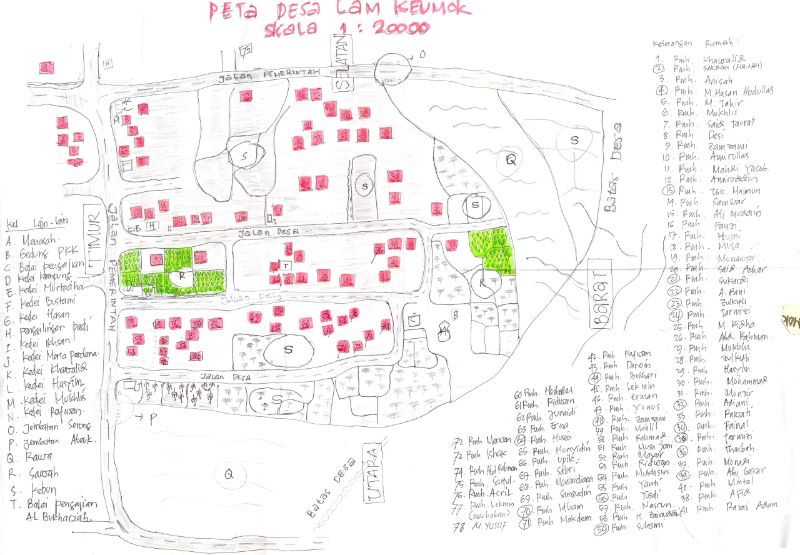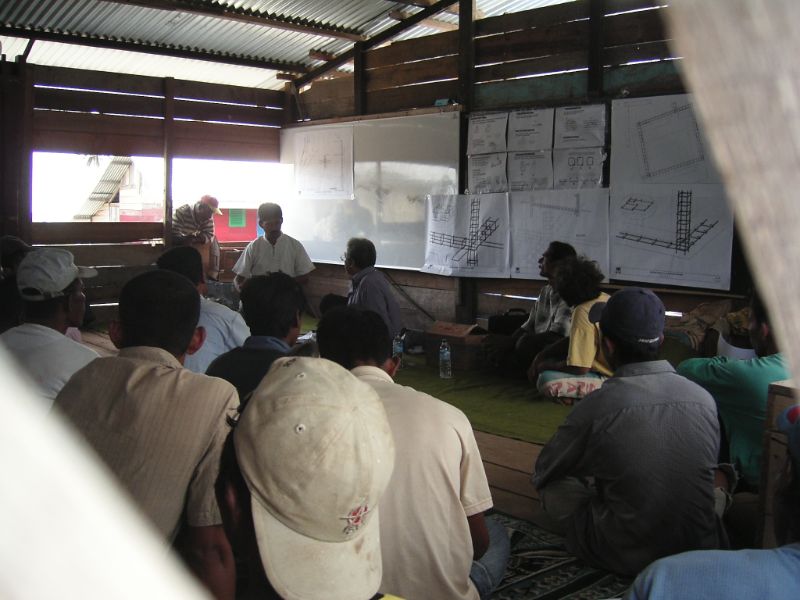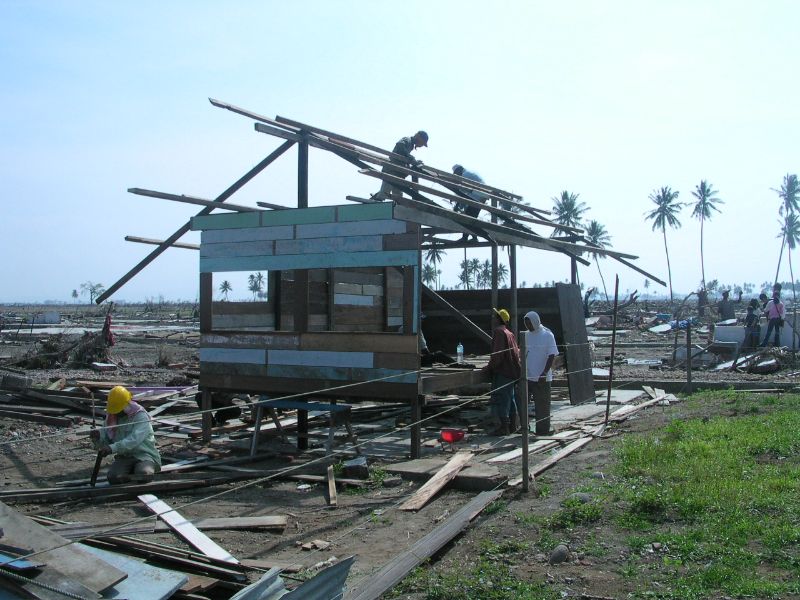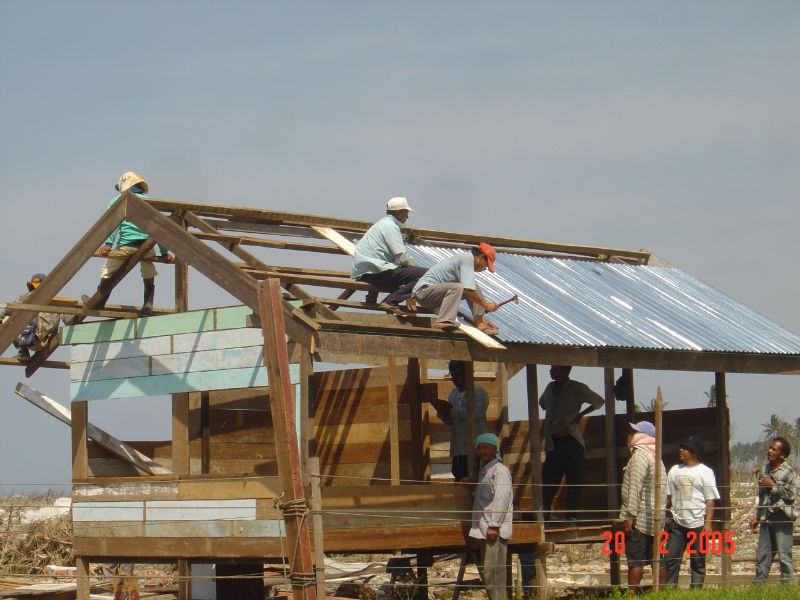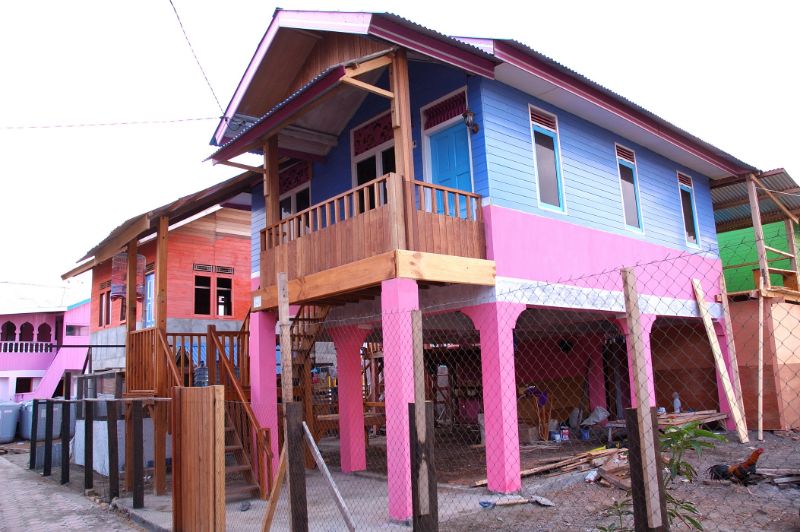TSUNAMI REHABILITATION IN ACEH, INDONESIA
Introduction
|
Before and After the Tsunami
|
The Tsunami that took place on 26th December, 2004 triggered by an undersea earthquake in the Indian ocean of Indonesia claimed around 2,88,000 lives highly affecting countries like Indonesia, Srilanka, India, Thailand, Somalia, Malaysia and Maldives. The houses, livelihood, civic amenities and infrastructure were also badly damaged. Responding to a request from Misserior and Janvikas, a team from Kutch Nav Nirman Abhiyan and Hunnarshala visited Indonesia, in January 2005 to assess the affected areas, and suggest an approach for rehabilitation. Urban Poor Consortium (UPC / Uplink ), a Jakarta based group of NGOs, decided to work in Aceh, and Hunnarshala provided continuous support for the rehabilitation activities.
|
|
Rehabilitation Process
For Uplink and Hunnarshala to be able to help further it was important to understand the community, their land and their aspirations. In many places the land itself had become water and boundaries had completely blurred. Land records in Indonesia were not maintained properly, so base maps were not available for mapping out these coastal villages. A unique participatory mapping technology was designed, in which the total station survey (TSS) was combined with the accurate knowledge of land titles by the people. The villagers made their own base maps according to their requirements. According to their requirements, houses were designed for them.
The pre Tsunami land use maps became the basis for helping people develop the redevelopment plans for each village. Planning for the following factors was undertaken with the village communities:
|
Participatory Planning with people's map
|
|
Different villages were asked to prepare their own house designs and submit them to Uplink. Two basic designs were used - Stilt house and Ground house. The stilt house was designed which was an adaptation of the traditional Achanese house. Four typologies of this traditional structure were developed according to the need and the interest of the house owners. Four typologies of the ground house were designed. a house owner had the opportunity to choose one of the suggested designs for his/her own house. Based on the site specifications and requirements of the owner, modifications were made on each house.
|
|
top: making earth blocks and bottom: a construction workshop
|
Construction workshops were established for works on steel, wood and earth. Training was imparted to the entrepreneurs on alternative earth technology which helped them to increase their efficiency. For this purpose, Hunnarshala transferred the technology and trained the entrepreneurs to produce mud blocks. Apart from this, the Steel workshop was established for the prefabrication of the steel for bands and columns of each house and to speed up the process ensuring better detailing of seismic safety. An entrepreneur in a village called Lamiseck was encouraged to set up a workshop for wood work to make the door and window frames by recycling the salvage material available in the markets.
|
Construction of Interim Shelters
Green Approaches and Technologies
|
Earth construction
To understand the viability of alternate earth technology for house construction, soil testing was done by Hunnarshala in April 2005. Based on the results of this and successful bricks made with local masons using local soil, mud blocks were then used on a large scale for construction. Mud block making machines were introduced in order to impart training to the entrepreneurs to produce mud blocks which helped them to produce 500 good quality blocks per day. Hunnarshala also took the initiative to transfer the fabrication technology of making machines in Indonesia. Drinking water
For drinking water, traditionally every home had their own wells that they used for drinking and domestic needs. However, the Tsunami had changed all that. Almost all the wells were saline after the earthquake. Hunnarshala invited sister organisation Gujarat Arid Communities and Technologies (ACT) to come and make an assessment. It was found that even when salinity was not a problem, biological contamination due to toilets near the wells was a major problem. In such situations, a community well in the sweet water portion of the village used to supply water to the houses. It became very important to develop organic, toxic chemical-free practices if the precious ground water had to be kept free from contamination. |
Organic agriculture
Hunnarshala sponsored the work of an organic farmer who had been working on the reclamation of saline soils, and organised to have Kutch Sajiv Kheti Manch (Organic farmers’ forum in Kutch, Gujarat) come and make an assessment report of all the affected farms. The assessment report categorized the farming practices into three types i.e. Sava or Paddy fields, Ladang or Horticulture and vegetable plots, Hill farming in which they grow chillis. Tsunami had destructed farms of all these types. For reclaiming the soils, manuring was done. struggle for sanitation
Sanitation perhaps was the biggest challenge. A study revealed that since the water level was very high, the possibilities of contamination of ground water was also high. Dumping of waste water and untreated sewage into the sea would pollute the marine environment. The Hunnarshala team supported Uplink in designing a Decentralized Waste Water System (DEWATS) to recycle and treat the sewage, bringing it to a standard that would not be harmful for marine life. |
By the end of December 2005,
- 659 temporary shelters were constructed in 24 villages.
- 500 permanent shelters were completed and occupied by the people.
- Over 200 masons have been trained.
- All the villages had their land maps.
- Micro plan for 15 villages were completed.
- Road network mapping for 12 villages were completed.
- Incorporation of DEWATS as waste water treatment system was planned for each house.
Completed Permanent Shelters
|


